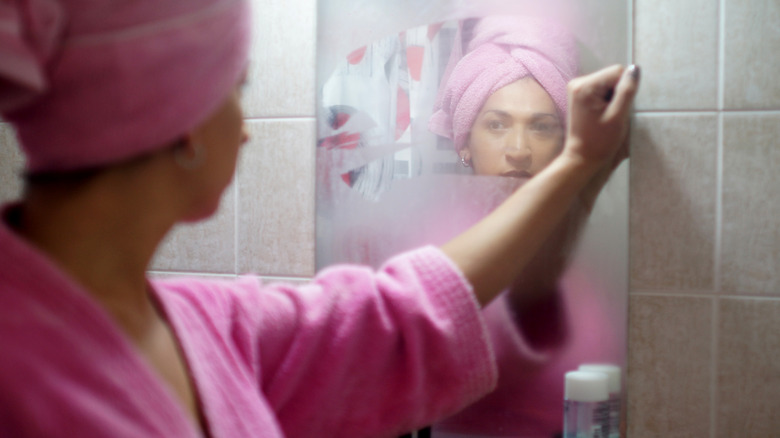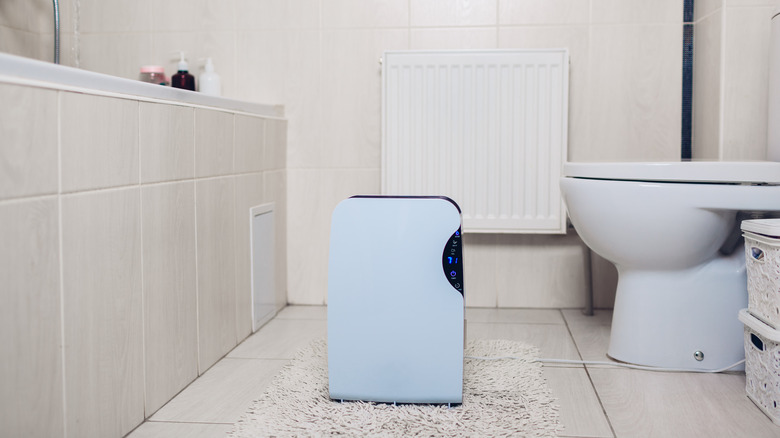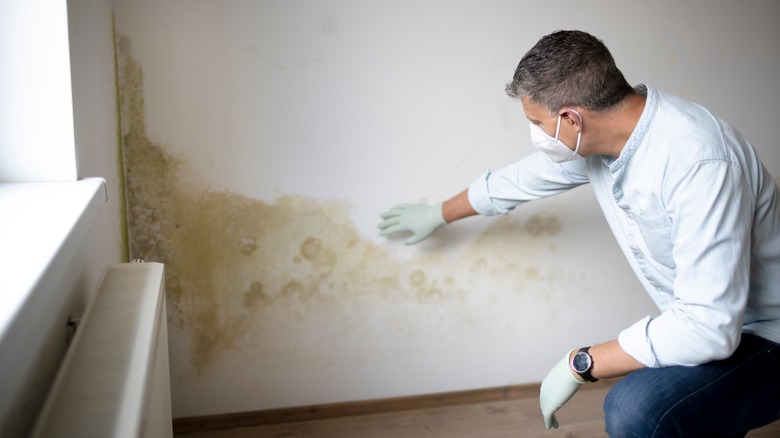This Is The Ideal Humidity Level For Your Bathroom
Measuring and regulating humidity levels in your bathroom is crucial for maintaining a healthy living space. Regular monitoring is vital, particularly during and following showers, which are peak times for humidity to rise. Ideal humidity levels for a bathroom should fall between 30% and 60%. Consistently maintaining your bathroom within this range can stave off multiple issues like potential damage to fixtures and paint. By vigilantly controlling humidity levels, you invest in your bathroom's long-term health and maintenance, dodging complications that could otherwise escalate into more severe problems.
A reliable method for gauging humidity and temperature in your space is using a hygrometer. However, a straightforward ice cube test can be an alternative if you're without one. Fill a glass with water, and add two or three ice cubes. Let the glass sit for four minutes before examining it. After the time has passed, inspect the glass. If you see condensation forming or even dripping down the outside, it's a sign your bathroom's humidity might be excessively high. Likewise, an absence of condensation could mean the environment is too dry.
How to maintain the right level of humidity in your bathroom
Managing humidity levels in your bathroom is crucial for maintaining a comfortable environment and preventing issues like mold and mildew. There are a few comprehensive strategies to tackle bathroom humidity effectively. First, the exhaust fan is your primary weapon against bathroom humidity. Start the fan before you shower and keep it running for at least 20 minutes after you've finished. This ensures that moist air is expelled from the room, helping to maintain a dry atmosphere. Another simple yet effective method is opening the bathroom door post-shower. This disperses humid air, contributing to a quicker reduction of moisture levels. Another effective technique is adjusting the temperature. A warm environment can mitigate humidity. Use a space heater or turn up your central heating to create conditions where moisture is less likely to condense.
Condensation often accumulates on tiles and other surfaces post-shower. A quick wipe-down with a towel can remove lingering moisture, preventing it from adding to the room's humidity. If designing a bathroom, opt for bathroom-specific paint and moisture-resistant tiles. Consider using a dehumidifier if your bathroom continues to suffer from high humidity. Finally, be sure to maintain your HVAC ductwork. Clean ducts and regular filter changes promote effective ventilation.
Risks of humidity that is not within the acceptable range
Maintaining appropriate humidity levels in your bathroom is vital for both health reasons and structural preservation. High humidity can foster mold growth, which thrives in temperatures between 77 and 86 degrees Fahrenheit and relative humidity above 55%. This mold isn't just an eyesore — it can lead to respiratory problems and other health concerns (via State of Rhode Island Department of Health). Additionally, persistent moisture can damage the structure of your bathroom, resulting in issues like peeling paint, deteriorating wallpaper, and even damage to the sheetrock. Such issues can diminish your home's value and lead to expensive repairs. Fixtures like wood cabinets and ceiling tiles can also suffer.
Besides mold, high humidity can worsen pre-existing respiratory conditions and degrade indoor air quality. Therefore, monitoring and regulating your bathroom's humidity levels is essential for maintaining your home's structural integrity and overall health. By proactively managing humidity, homeowners can reduce the need for frequent repairs and ensure a safer living environment.


